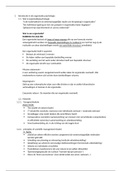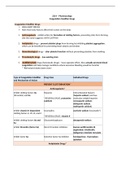Examen
NUR 336 Final Exam Questions and Answers
- Cours
- Établissement
When should you drain an ostomy? when it is 1/3 full What do you assess when draining an ostomy? -stoma with each change and report any discoloration -skin complications may include itching, burning, or pain What are risk factors for skin complications with an ostomy? -obesity -poorly located or ...
[Montrer plus]







